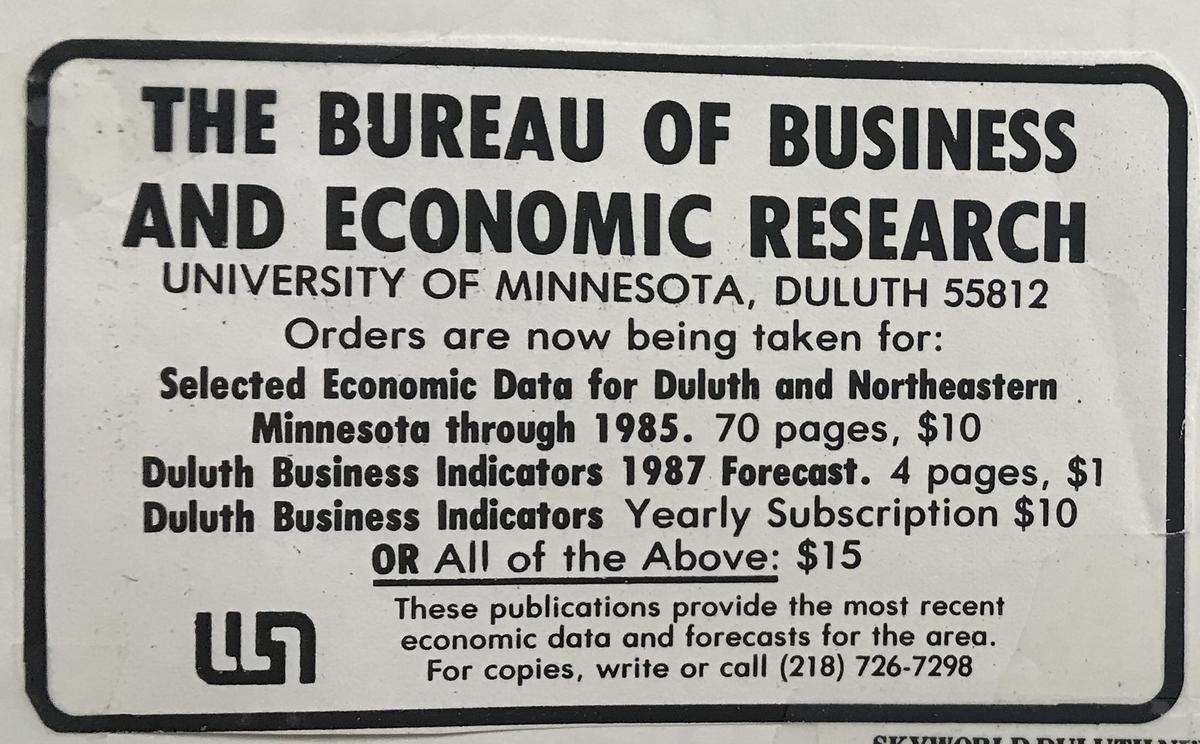Today (2021)
Among the numerous projects completed by the BBER this past year were an analysis of the economic impacts that Canadian biofuels could have on that country’s economy; the Border Barometer report on the impacts of the U.S.-Canadian border closure resulting from the COVID-19 pandemic conducted in partnership with eight other university research entities; a business retention and expansion study for San Juan County, New Mexico; and a market analysis on the U.S. residential housing market, conducted for the Softwood Lumber Board. Notably, all of these studies involved working with clients based outside of Minnesota, an indication of how our recent move toward virtual work has expanded the BBER’s client base to include those beyond just the seven-county Arrowhead region.
Ten Years Ago (2011)
In December 2011, the BBER completed one of its largest and most comprehensive studies, examining the return on investment for the Minnesota public library system. The research, conducted by former BBER director Jim Skurla, with help from Emeritus Professor of Sociology Don McTavish and Associate Professor of Economics Christopher McIntosh, found that Minnesota households placed great value on public libraries. The main conclusion from the survey was that the average household would be willing to donate between $31.70 and $38.30 annually to support the public library system.
Twenty Years Ago (2001)
In 2001, the BBER completed the extensive 2001 Labor Force Assessment study. As part of that study, the BBER conducted a telephone survey of nearly 1,500 Northeastern Minnesota households to determine work skills, potential under-employment and work preferences of the workforce aged 16 and over. For context, while the BBER was conducting the phone surveys, the U.S. was in the midst of a recession. The survey found that, at that time, 36% of survey respondents were not currently employed. While a significant number of households reported relatively high-level skills, firms were generally looking for lower skills than were available in the region. Unfortunately, this trend still remains true today.
Thirty Years Ago (1991)
In April 1990, the BBER completed an economic impact analysis of the proposed Northwest Airlines Airbus Maintenance facility, estimating that the facility would bring more than $1.1 billion in economic impacts to the region over the first five years of the project. The report concluded that the facility could serve as “the largest development project in Duluth since the U.S. Steel plant was opened in 1918.” The facility was later built with the assistance of financial incentives passed by Governor Arne Carlson in 1991. While the airbus facility eventually closed in 2007, the investment established Duluth as an economic cluster for the airline industry—an industry that remains strong today.
Forty Years Ago (1981)
Forty year ago, the BBER, with funding from the University of Minnesota’s Center for Urban and Regional Affairs, completed a market analysis of Duluth’s West End neighborhood, known today as Lincoln Park. It is interesting to read the report’s conclusions in light of the neighborhood’s recent growth in small business and retail and the rebranding of the area as Lincoln Park’s Craft District. The report states, “Nevertheless, the area continues to have significant potential because of its nearness to downtown, availability of land for development, and access to the interstate highway system. Economic development of the area is at a crossroad. In the next two decades the West End may continue to decline as it has over the last 15 or 20 years, or the area may be renovated and expanded.”
Fifty Years Ago (1971)
In the spring of 1970, the Bureau of Business and Economic Research was officially organized as an administrative unit of the University of Minnesota Duluth. The logistical details of organization, space, policy, and staffing were hammered out during academic year 1970-1971. At that time, the Bureau included a director with full-time teaching responsibilities and a half-time secretary. In addition to publishing its popular Duluth Business Indicators, the BBER was also developing its sister indices—the Duluth Retail Sales Index, the Duluth Hotel-Motel Index, and the 1971 Minnesota Business Directory—as well as pursuing other new research methods such as regional input-output analysis, which at that time was still a relatively new technique in the field of economics.
